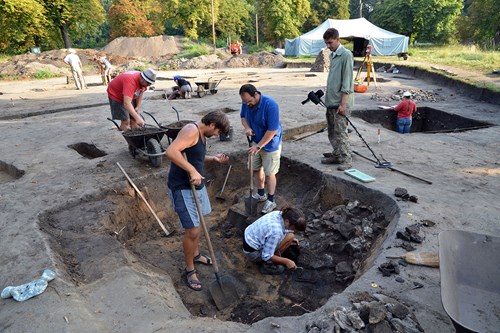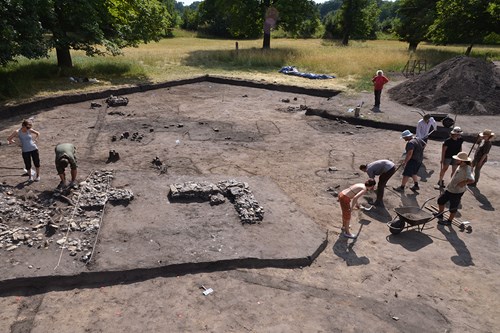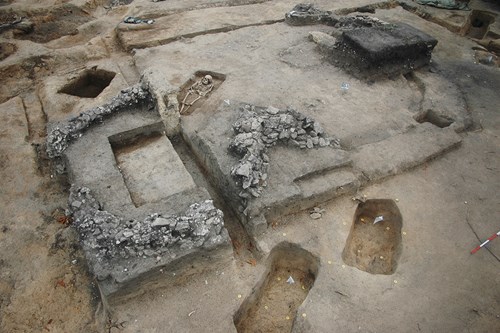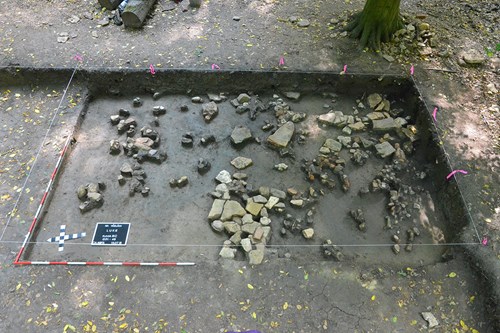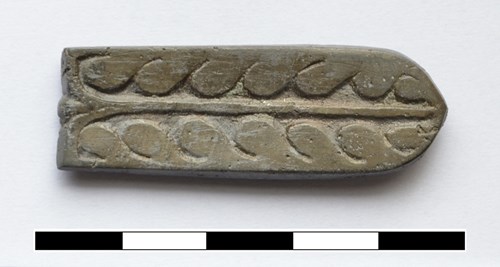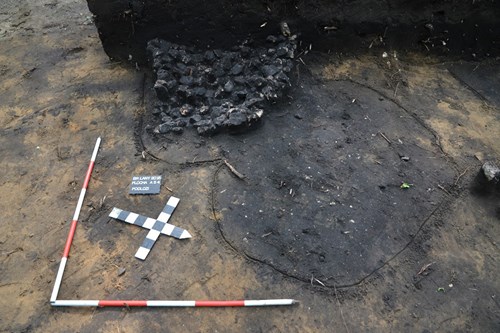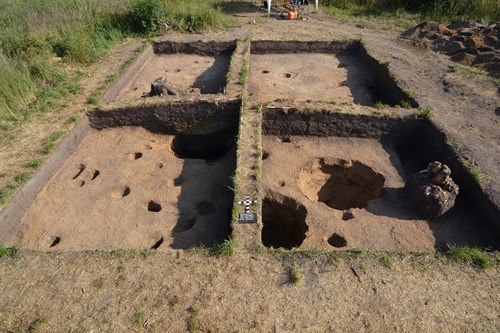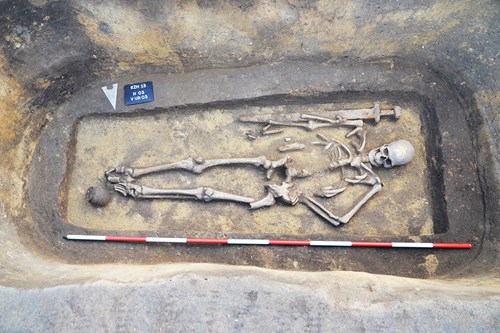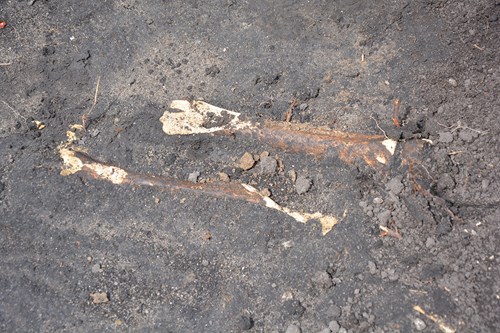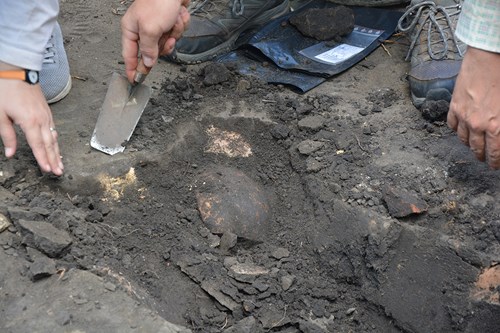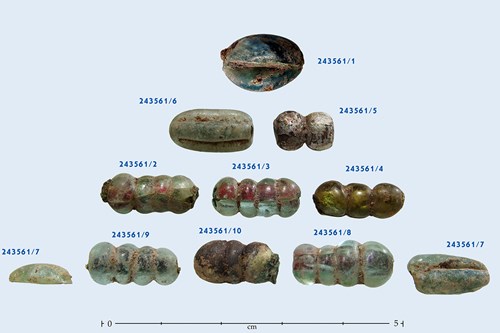The archaeological scientific and research base at Pohansko near Břeclav is concerned with research on early medieval settlement in the area above the confluence of the rivers Morava and Thaya, and on the fortified Great Moravian agglomeration at Pohansko, mainly on study of early medieval social structure, economy and chronology. We use the newest technology for an accurate and fast digital documentation, survey and analyses.
A significant research success emerged from the research on a Great Moravian rotunda, cemetery and settlement in the south-eastern suburb. The relics of sacred architecture and the surrounding cemetery have been explored in 2008 to 2012. The research was completely published with the help of a grant from the Czech Science Foundation P405/12/0111 “Between Great Moravia and Přemyslid Moravia. Archaeology of collapse and revival of early medieval society”. The excavations are currently focused on the study of settlement structure in the vicinity.
- MACHÁČEK, J. – BALCÁRKOVÁ, A. – ČÁP, P. – DRESLER, P. –PŘICHYSTAL, A. – PŘICHYSTALOVÁ, R. – SCHUPLEROVÁ, E. – SLÁDEK, V. 2014: Velkomoravská rotunda z Pohanska u Břeclavi. Památky archeologické, 1051, 87-153.
- MACHÁČEK, J. – DRESLER, P. – PŘICHYSTALOVÁ, R. – SLÁDEK, V. 2016: Břeclav – Pohansko VII. Kostelní pohřebiště na Severovýchodním předhradí. In: Spisy FF MU č. 455. Brno.
- MACHÁČEK, J. – SLÁDEK, V. eds. 2017: At the end of Great Moravia: Skeletons from the second church cemetery at Pohansko-Břeclav (9th 10th century A.D.). British Archaeological Reports (International Series), Oxford. Vol 2836.
Shovel testing in the immediate neighbourhood of Pohansko helped to identify many unknown early medieval settlements. One of them, the settlement of Břeclav – Na včelách, has been explored in 2013 to 2015 together with Czech American Archaeology Field School – College of DuPage. The shovel testing survey was funded by a grant project of the Czech Science Foundation P405/12/P150 “Economic hinterland of a centre, or just settlements near the hinterland of a centre?”.
- DRESLER, P. 2016: Břeclav – Pohansko VIII. Hospodářské zázemí centra nebo jen osady v blízkosti centra? Brno.
The research into settlement structure at the Břeclav – Lány site with numerous finds of Slavic-Avar strap ends, and the newly discovered early medieval tumulus cemetery in Bernhardsthal – Föhrenwald represent the focal points of the project „Frontier, Contact Zone or No Man's Land? The Morava-Thaya Region from the Early to the High Middle Ages“ (Reg. No. GF15-34666L).
Four research campaigns at the multicultural site Kostice – Zadní hrúd yielded significant knowledge of settlement development in the area between Břeclav and Lanžhot in prehistoric and early medieval times, and mainly in the period from the 9th to the 12th century. This research was presented in a monothematic issue of the journal Archeologické rozhledy – AR 2013, vol. LXV, No. 4.
- BIERMANN, F. – MACHÁČEK, J. – SCHOPPER, F. 2015: An Dyje und Notte im Mittelalter: Vergleichende archäologische Untersuchungen zu Sozial- und Siedlungsstrukturen im westslawischen Raum (6. bis 13. Jahrhundert). In: Studien zur Archäologie Europas 25. Bonn.
The unique archaeological-anthropological research into non-church cemeteries within the Břeclav – Pohansko agglomeration interconnects synergistically the research on material and spiritual culture with research on population who created this culture. History is made by people, therefore it is necessary to connect optimally the research results of archaeology and anthropology. An ideal space is offered by the southern suburb of the Great Moravian centre at Břeclav-Pohansko. The research in this area is currently focused on complex processing of research data on graves and buried individuals. The aim of the project is to reveal the reasons and define the rules which determined the burial practices in early medieval settlements, on the basis of results of research into funerary areas in the southern suburb. The main goal of the project is to understand and explain the existence of disparate burial practices of inhabitants of 9th century central agglomerations on the territory of Great Moravia (clearly delimited regular/Christian cemeteries versus settlement burials).
The research is funded by the Czech Science Foundation: The problem of early medieval funerary areas and dispersed settlement burials: complex study of graves from the southern suburb of Břeclav-Pohansko (GA16-05791S).
Technological – material research on early medieval glass beads has been carried out in cooperation with Department of Geological Sciences, Faculty of Science, Masaryk University (doc. RNDr. J. Štelcl, CSc.). Currently the beads from graves in both suburbs are analysed, and there also is a possibility of future international cooperation in the research on glass matrix and technological procedures of glass bead production.
- PŘICHYSTALOVÁ, R. – ŠTELCL, J. – VÁVRA, V. 2014: Glass Beads and Buttons from the Southern Suburb of the Břeclav-Pohansko Stronghold. Journal of Glass Studies 56/1, 37-59.
